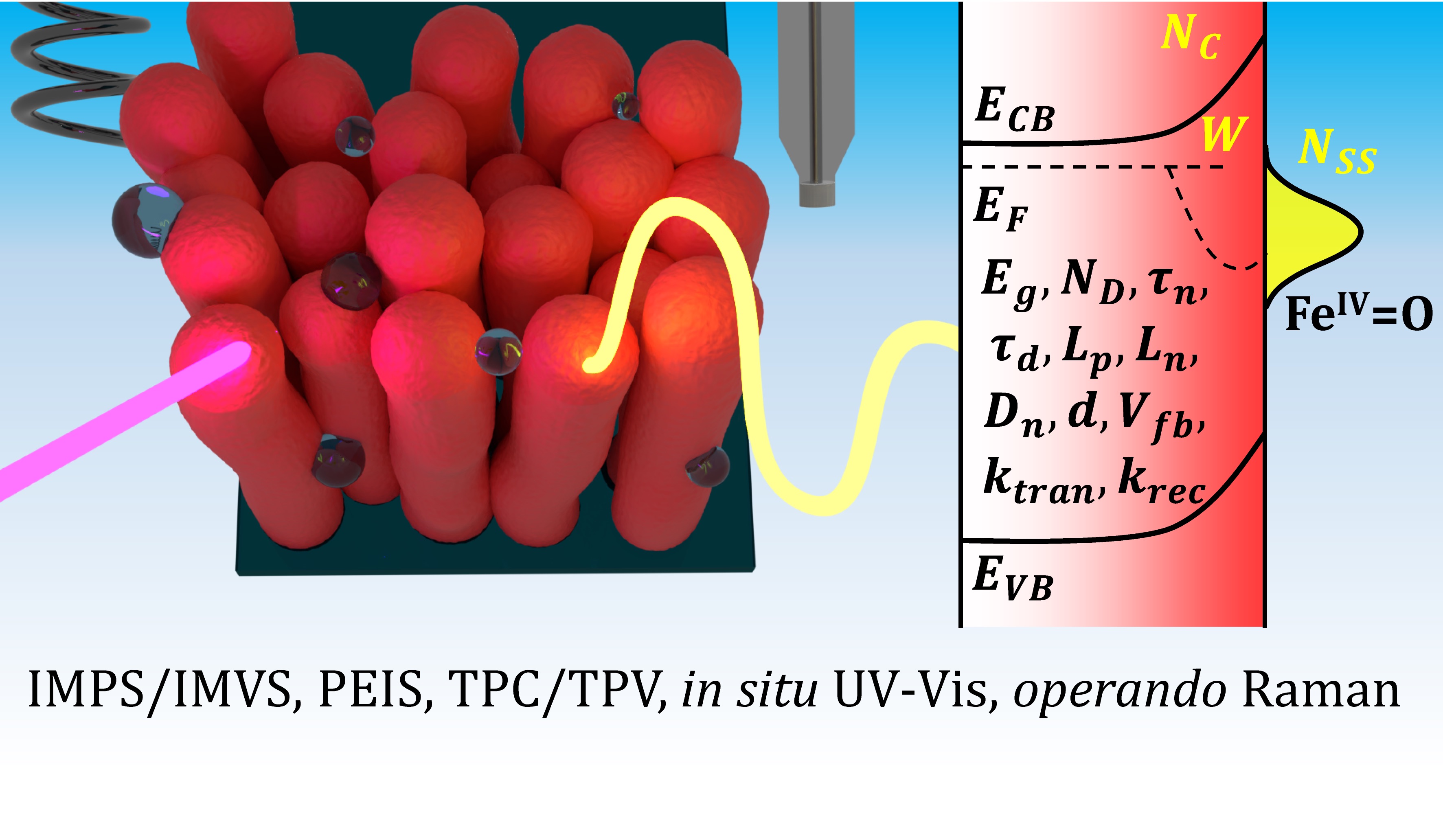Uncovering the interfacial carrier dynamics in emerging photoelectrodes for solar fuel production – an operando spectroelectrochemical study
Storing solar energy in chemical form (e.g. hydrogen from water splitting), represents a promising route to enable a carbon-neutral society. Photoelectrochemical (PEC) water splitting holds the key to perform this process with simplicity and at high theoretical conversion efficiency. However, the realization of PEC H2 production at a global scale is limited by the current performance of semiconductor materials suitable for PEC. To advance the field, an improved fundamental understanding of the semiconductor-liquid junction (SCLJ), wherein the photoelectrosynthetic reaction is occurring, is urgently needed to identify the parameters limiting the performance and direct actions for their improvement.

Here, we show how a toolbox of operando and in situ characterization techniques, namely, intensity-modulated photocurrent/photovoltage spectroscopy (IMPS/IMVS), transient photocurrent/photovoltage spectroscopy (TPC/TPV), photoelectrochemical impedance spectroscopy (PEIS), in situ UV-Vis spectroscopy, and operando Raman spectroscopy can be used to gain deep insight of the competing processes at the SCLJ. We highlight our recent studies with emerging semiconducting photoelectrodes (CuIn0.3Ga0.7S2, CuFe2O4,[1] ZnFe2O4,[2] SnS2,[3] and LaFeO3), which have provided insights into the interfacial carrier behavior, i.e., energetic across the interface, kinetics of charge transfer and recombination, nature of the surface states, and chemical identity of intermediate species. In particular, we implement light modulation techniques (IMPS/IMVS) on CuFe2O4 to reveal an unfavourable kinetic competition which significantly hampers the charge transfer efficiency. Likewise, by fitting the impedance response with equivalent circuits, a clear map of the density of surface states is shown. Overall, these findings provide a better understanding on the electrochemical phenomena at the SCLJ, establishing a precise roadmap to engineer the interface and optimize the performance of solar fuel devices.
[1] Yongpeng Liu, Florian Le Formal, Florent Boudoire, Liang Yao, Kevin Sivula, Néstor Guijarro, Journal of Materials Chemistry A, 2019, 7, 1669-1677.
[2] Xiaodi Zhu, Néstor Guijarro, Yongpeng Liu, Pascal Schouwink, Rebekah A. Wells, Florian Le Formal, Song Sun, Chen Gao, Kevin Sivula, Advanced Materials, 2018, 30, 1801612.
[3] Yong Zuo, Yongpeng Liu, Junshan Li, Ruifeng Du, Xiaoting Yu, Congcong Xing, Ting Zhang, Liang Yao, Jordi Arbiol, Jordi Llorca, Kevin Sivula, Néstor Guijarro, Andreu Cabot, ACS Applied Materials & Interfaces, 2019, 11, 6918-6926.